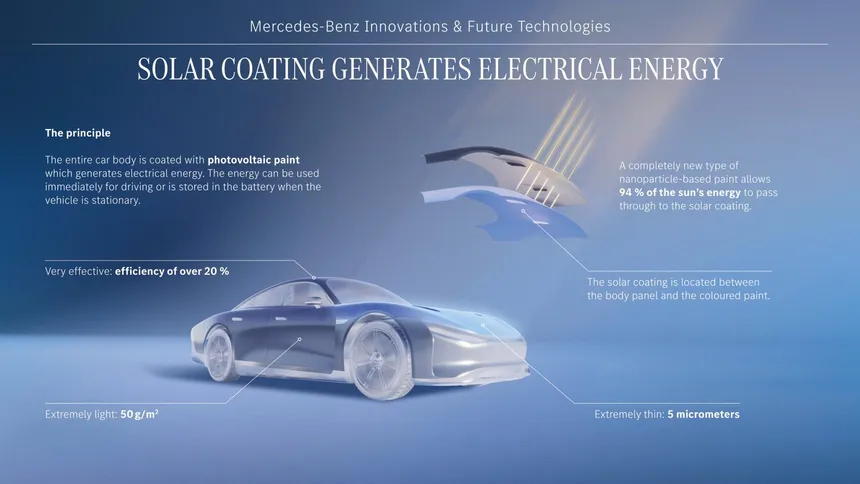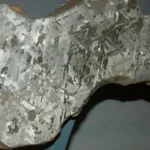Mercedes-Benz Solar Paint Technology to Transform EV Energy

Mercedes-Benz has introduced a revolutionary solar paint technology that could drastically reduce electric vehicle (EV) reliance on charging infrastructure. The photovoltaic coating, currently under development, integrates seamlessly into the body of a car. With an efficiency of 20%, it could generate sufficient energy to power a car for up to 12,000 kilometres annually in optimal conditions. For regions with higher solar intensity, such as Los Angeles, the output could support 100% of a typical EV owner’s daily driving needs, eliminating the need for plug-in charging.
Technology
This cutting-edge coating is just 5 micrometres thick—less than a human hair—and weighs 50 grams per square meter. Applied beneath the car’s protective colour paint, it remains shielded from external wear and tear. A medium-sized SUV, with approximately 11 square meters of surface area, could utilize the solar paint to produce enough energy for significant portions of annual travel: up to 14,000 kilometres in Beijing or 7,500 kilometres in Stuttgart.
Importantly, the paint uses non-toxic and recyclable materials and excludes rare earth elements and silicon, making it both sustainable and cost-effective. Mercedes-Benz claims the technology will be cheaper to produce than conventional solar modules.
Beyond EV
Beyond EVs, the solar paint’s applications could extend to other surfaces like building exteriors, enabling large-scale energy harvesting. This innovation aligns with the company’s Vision EQXX program, which focuses on sustainability and efficiency.
Markus Schäfer, CTO at Mercedes-Benz, emphasized the brand’s commitment to “pioneering technologies that offer real added value” and sustainable automotive progress. While commercial deployment may take time, the potential for solar paint to redefine energy consumption in the automotive industry is immense.





